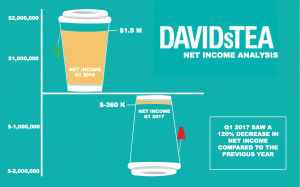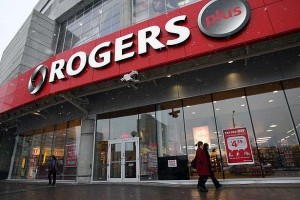
From June to July there was almost an 80 per cent increase in jobs in bars, breweries, nightclubs and taverns in Ontario, according to analysis of a recent report from Statistics Canada.
This is the highest increase in jobs in the sector Statistics Canada categorizes as “drinking places” since the Covid-19 pandemic shutdown the economy in March. For Overflow Brewing Company, almost all the jobs they lost have been refilled because of a spike of online sales and the help of laid-off workers from the airline industry.
From March to July employment rates of drinking places have dropped by almost 50 per cent, according to the same report by statistic Canada. For Overflow it was even more drastic: “On March 16 there was nobody else here but Mitch and I,” says Brad Fennell, co-owner of Overflow.
http://A graph showing the largest dip of employment being in May, and the largest jump being in July. Max Bakony.
Together Fennell and Mitch Veilleux opened the brewery in 2017. Until the spring of 2020 they had only two online sales.
“Then on the 16th of March it started with one, and then 10, and then 20, and then upwards of a hundred (online sales) a day,” says Fennell.
Today Overflow is no longer one of the only craft breweries delivering beer, but its ability to offer the service early during the pandemic helped save their business.
By mid-summer they couldn’t hire enough from the beverage industry, so 50 per cent of their new hires ended up being flight attendants: “If you can serve somebody up 20,000 ft. in the air, in a steel tube, and be relaxed under the pressure,” says Fennell. “You can certainly work here.”
From March to July airline sector jobs in Ontario dropped by almost 20 per cent.
http://
A graph showing the largest dip of employment in airlines being in May. Over the following three months Overflow hired many of those who lost their jobs in the skies. Max Bakony.
The news that former airline workers are finding work at Overflow was heartening for Wendy Shaw. She’s an employment counselor and outreach specialist for Youth Services Bureau, a non-for-profit organization offering job seekers of all ages support in finding employment.
“I think it’s incredibly important that people start looking at other options,” says Shaw. For example, “if you don’t have smart serve, you’re probably not going to be able to work in a brewery, or work in a senior’s residence, or work in safe food handling…”
Shaw urges job seekers to invest in the credentials needed to work in multiple industries. She says the current job market is fierce.
More online sales didn’t make things easier for Overflow as the flip in their business model came with new problems:
“We were running out of beer,” says Veilleux.
According to the brewer, their tanks weren’t big enough to produce the quantity they needed for the high-volume low margin business they had transformed into. “We had to sell our old (brewing) tanks, buy new ones, integrate them, and start brewing with twice the number of ingredients,” says Veilleux.
At the height of their sales, they were starting from scratch.
The expense of supporting the online sales kept their profits nil while their revenues remained high. Because of their high revenue, they didn’t qualify for most programs offered by the Federal government. An unfair predicament according to Veilleux: “We could have used that little bit of relief”
Two weeks ago after the Speech from the Throne, Prime Minister Justin Trudeau announced his plan to create one million new jobs for Canadians and to reintroduce the finical assistance available to Canadians and Canadian businesses this summer. Veilleux and Fennell are proud of how both the provincial and federal governments helped Canadians.
However, they stress that to reach that quota set by Trudeau jobs have to be created organically by better supporting the businesses providing them.









